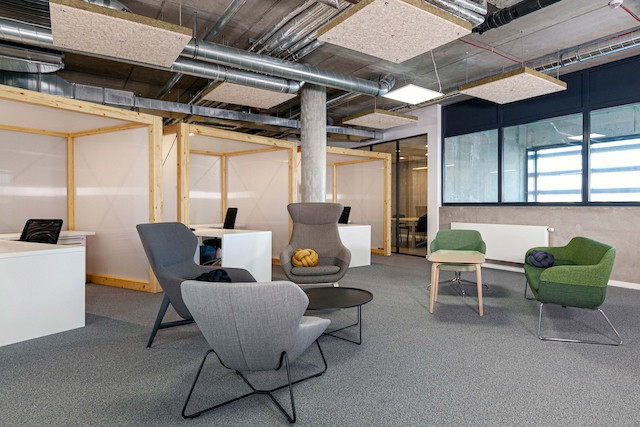“We lost something we always had,” says Meyer, CEO of the architecture, interior design and urban planning office. Circularity used to be the norm. Everything was reused and recycled. His firm is trying to reintegrate these values into its designs. For example, it works with exposed concrete, as plastering makes it near-impossible to reprocess the material. Designs are modular, allowing buildings to be repurposed to changing needs. The firm aims for timeless, solid, sensible architecture, without losing its eye for beauty.
“We are in a transformative phase, not just the client, but us, too. That takes time,” he says, recounting anecdotes of presenting ambitious, environmentally friendly designs only to be told that the plans are too pricey. “The ambition and reality must match,” says Meyer. “At the end of the day, as an architect you’re only as good as your client allows you to be.”
It will take public interest and regulation to make sustainable building the norm, rather than a trend, according to the architect. “The state’s role will be crucial,” he says, citing bans on single-use plastic as the most effective way of eliminating it.
But there are encouraging signs. “There is a demand,” he says of customer awareness for living in a healthy environment. This is also translating into office spaces. “They are being designed differently,” he says of workspaces, with more emphasis on breakout and meeting areas but also more personal space, not just because of the pandemic.
Wellbeing at work
Tied to more sustainable modes of living is greater emphasis on wellbeing. “We spend more than 90% of our time inside,” says Djenadi, commercial director at Iko Real Estate, which developed the first Well-certified office block in Luxembourg. “The certificate assesses the performance of a building whose characteristics influence the health and well-being of its occupants.” This includes materials used but also natural light as well as sound, movement and community concepts. The pandemic has increased awareness for better air quality, another one of the Well criteria, says Djenadi.
The building features wall gardens and green spaces, rooftop beehives and it collects rainwater. It also aims to encourage more sustainable modes of transport. “The role of office spaces is experiencing an evolution and responds more and more to the need to create a social link, allow human exchange,” says Djenadi, adding that companies are becoming more attentive to the needs and expectations of their employees. And while the Well 22 complex is a pilot project, “we are convinced that these changes will be long-lasting.”
This article was first published in the April edition of Delano magazine. To subscribe, visit the Maison Moderne shop.
